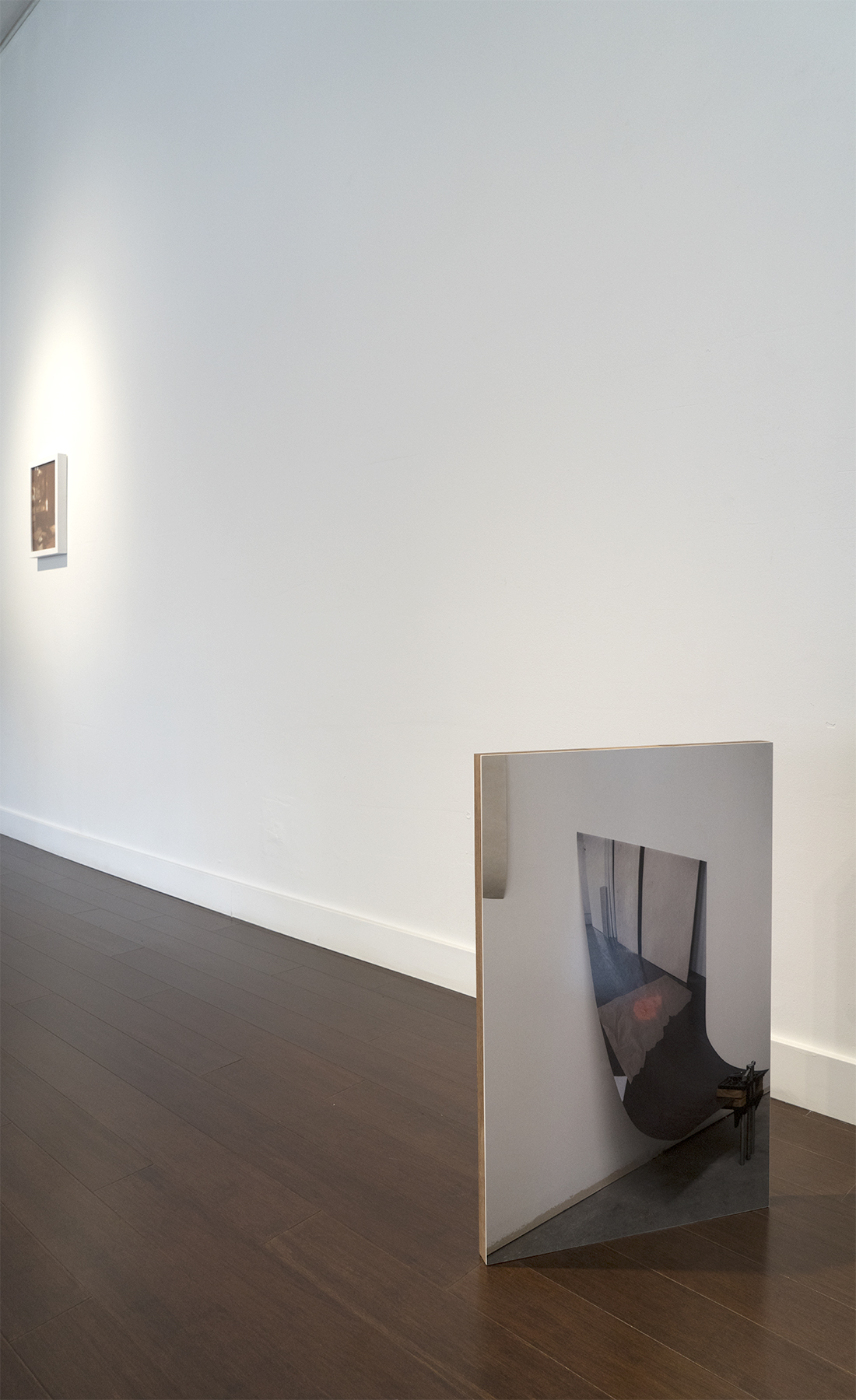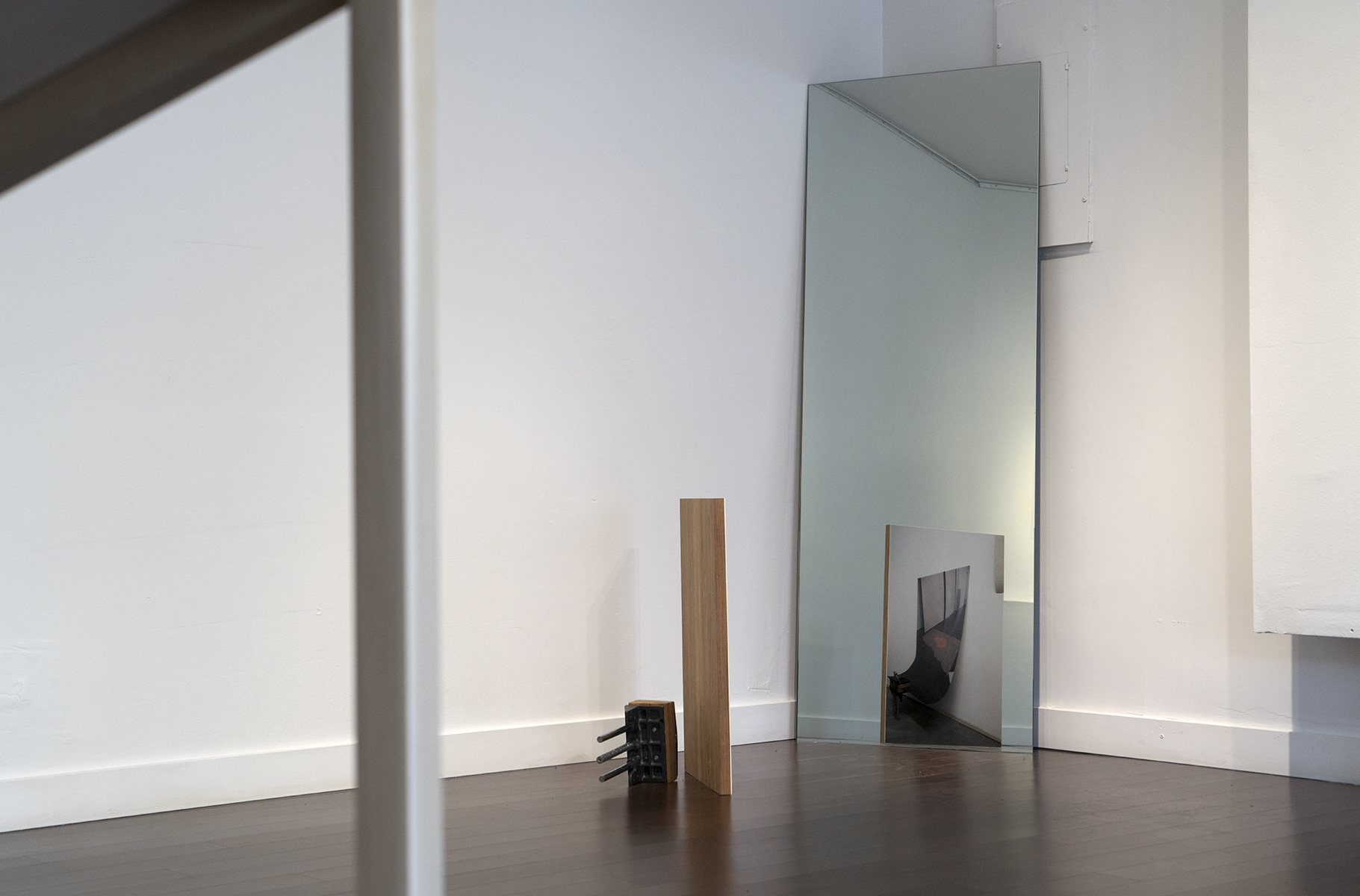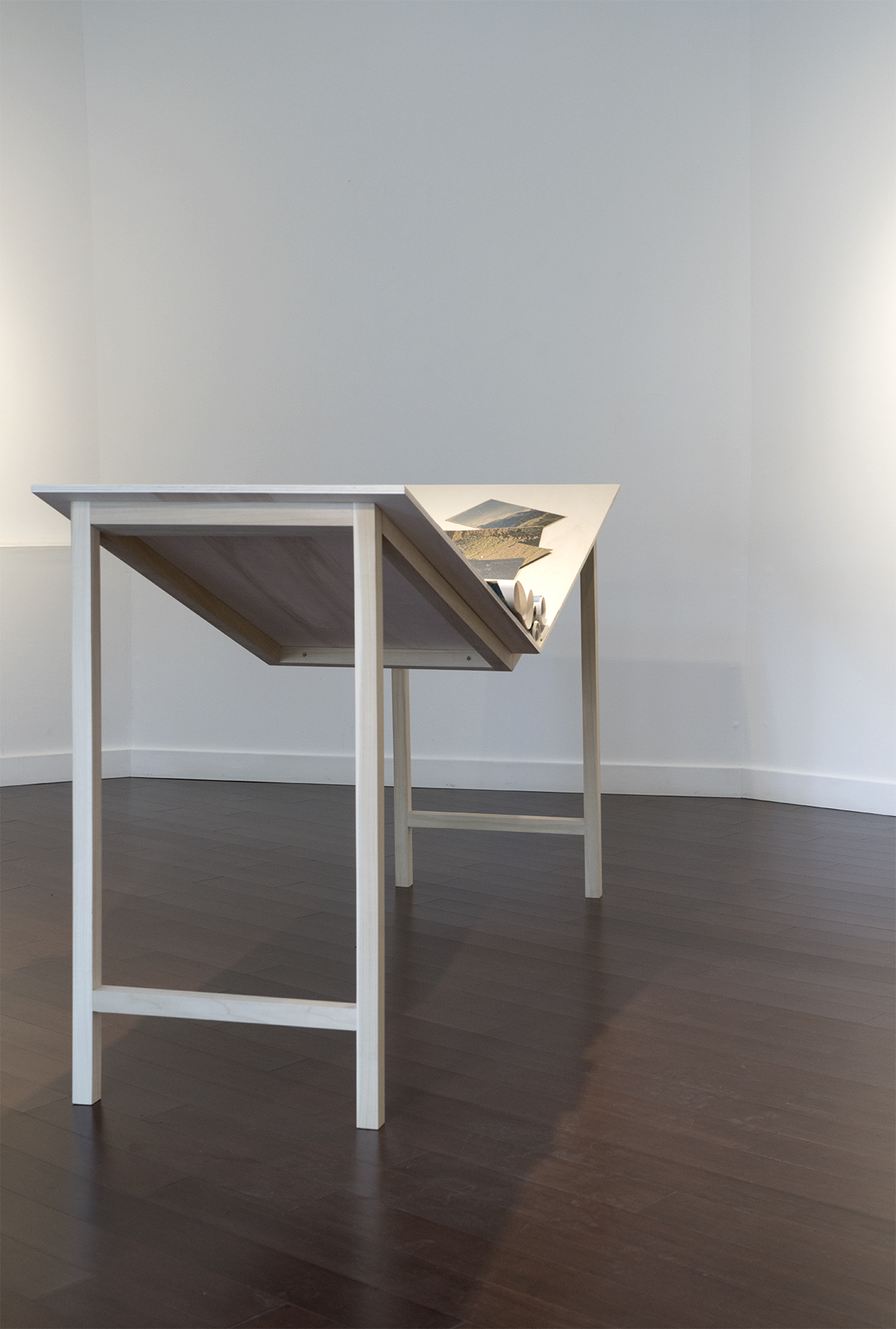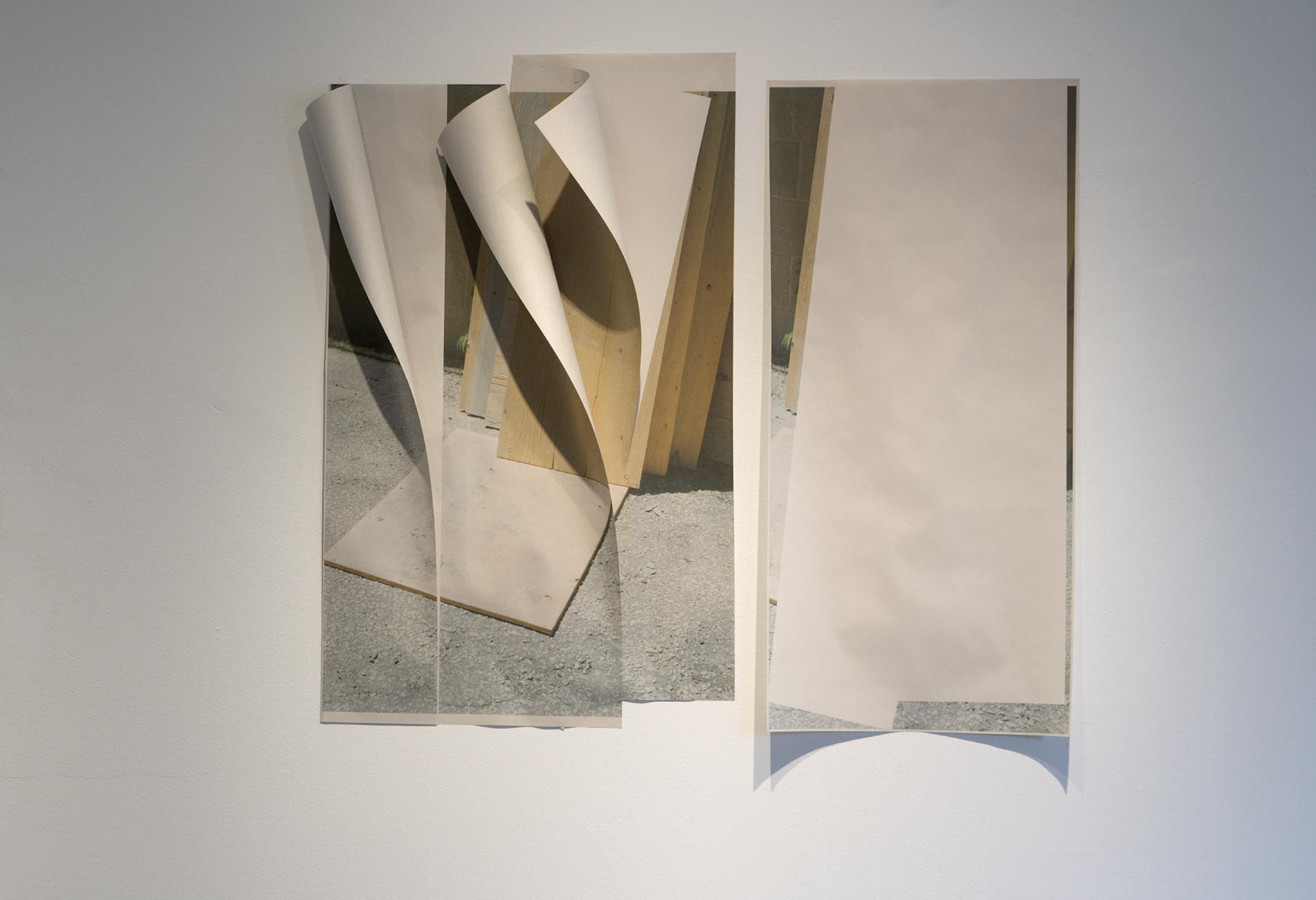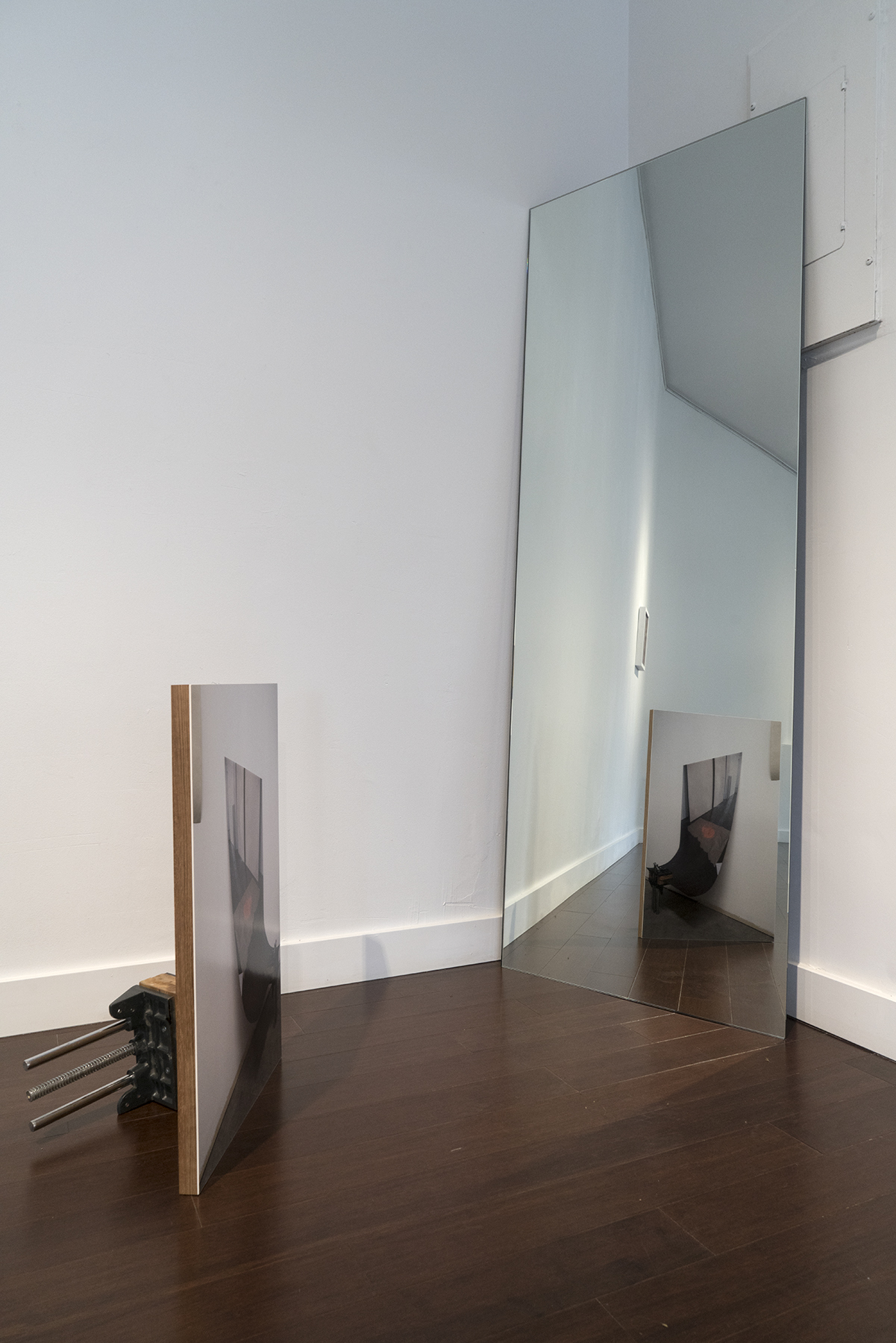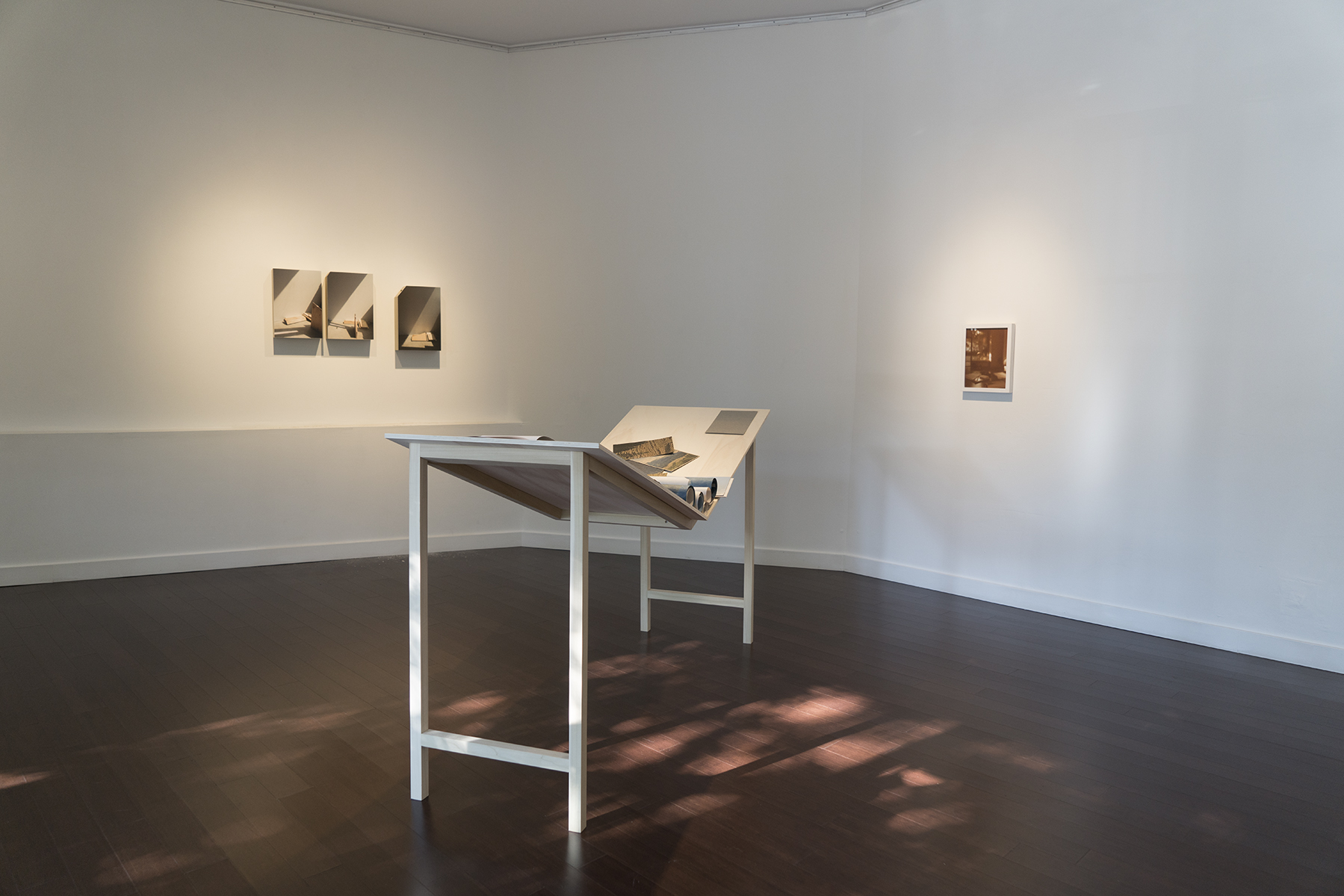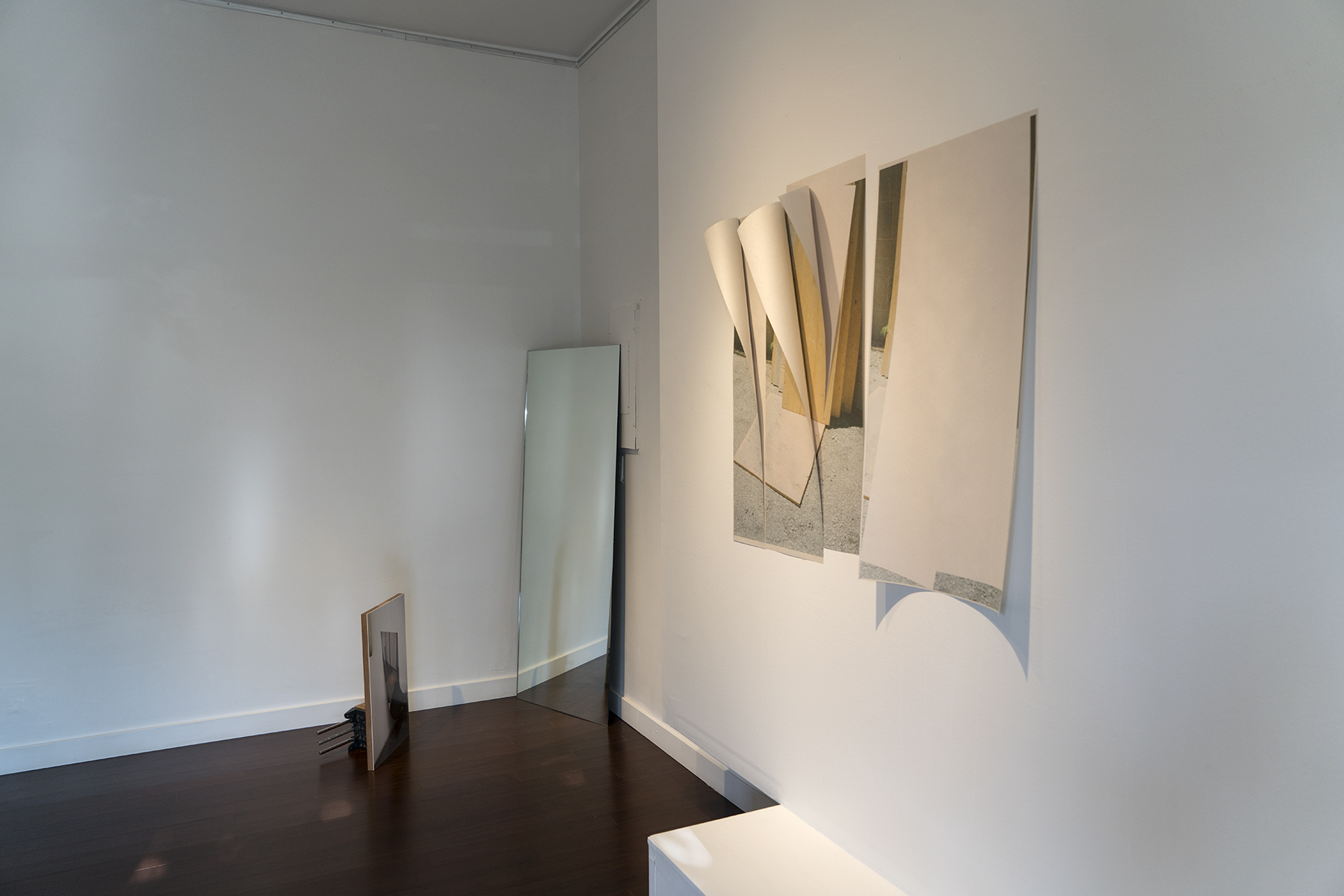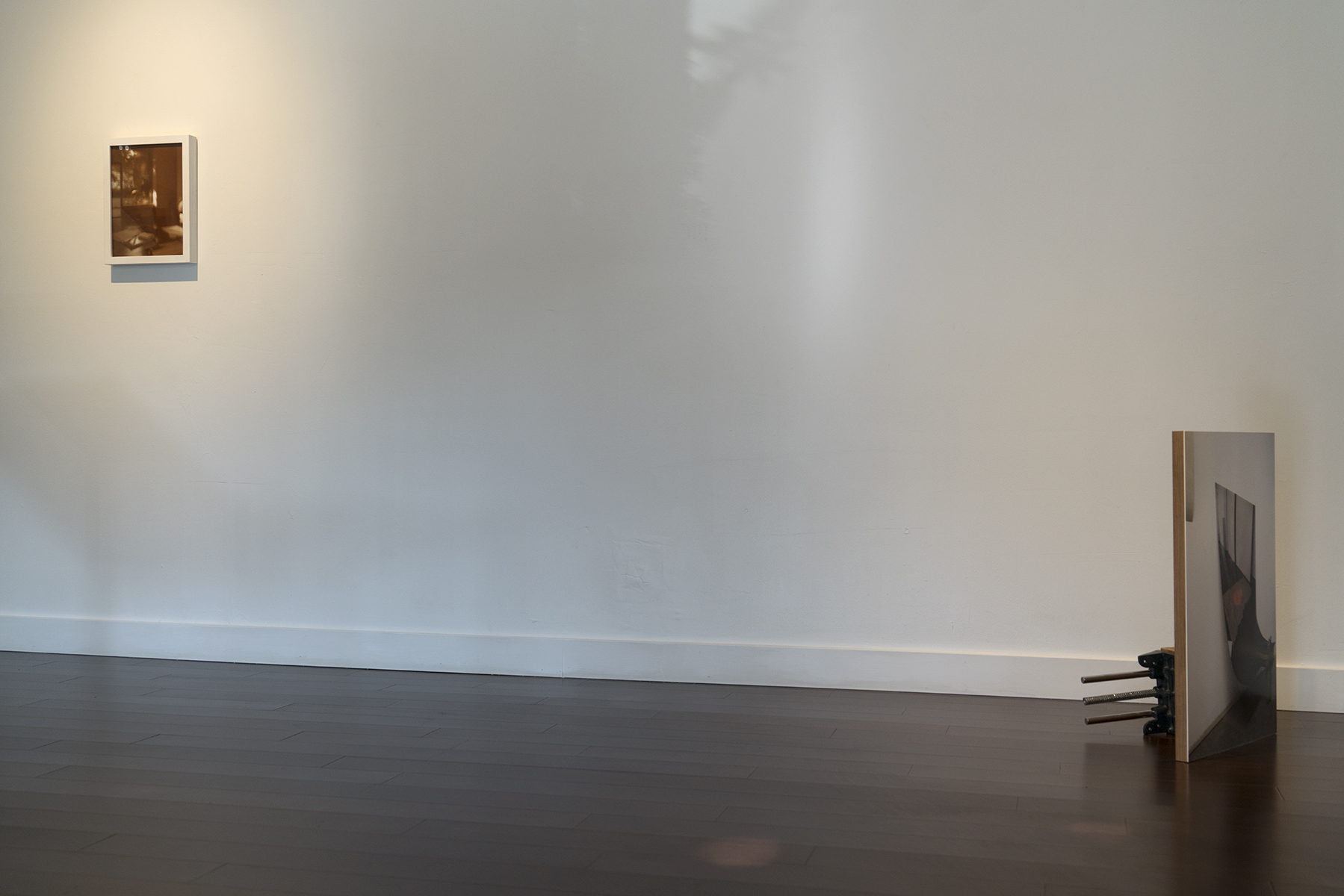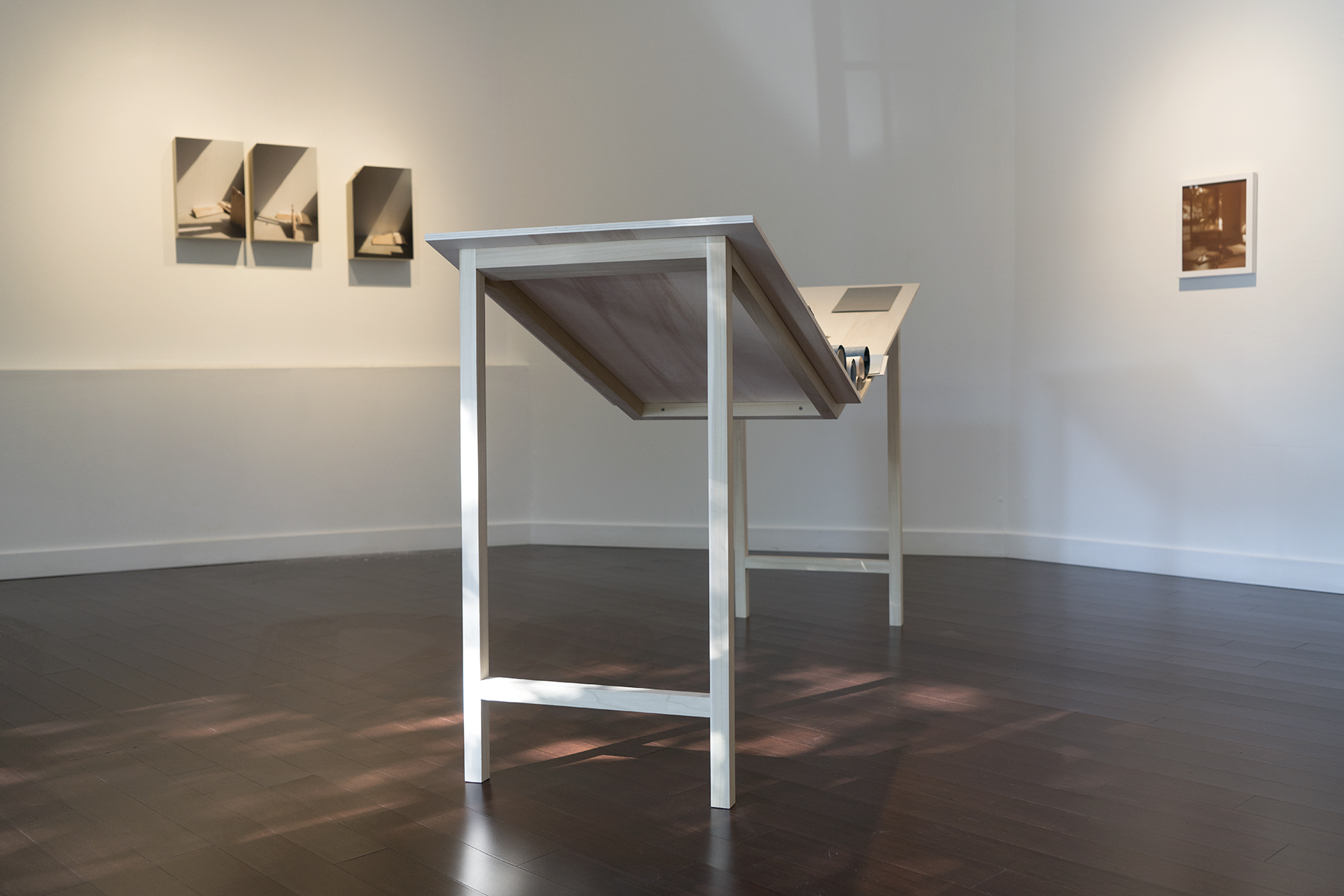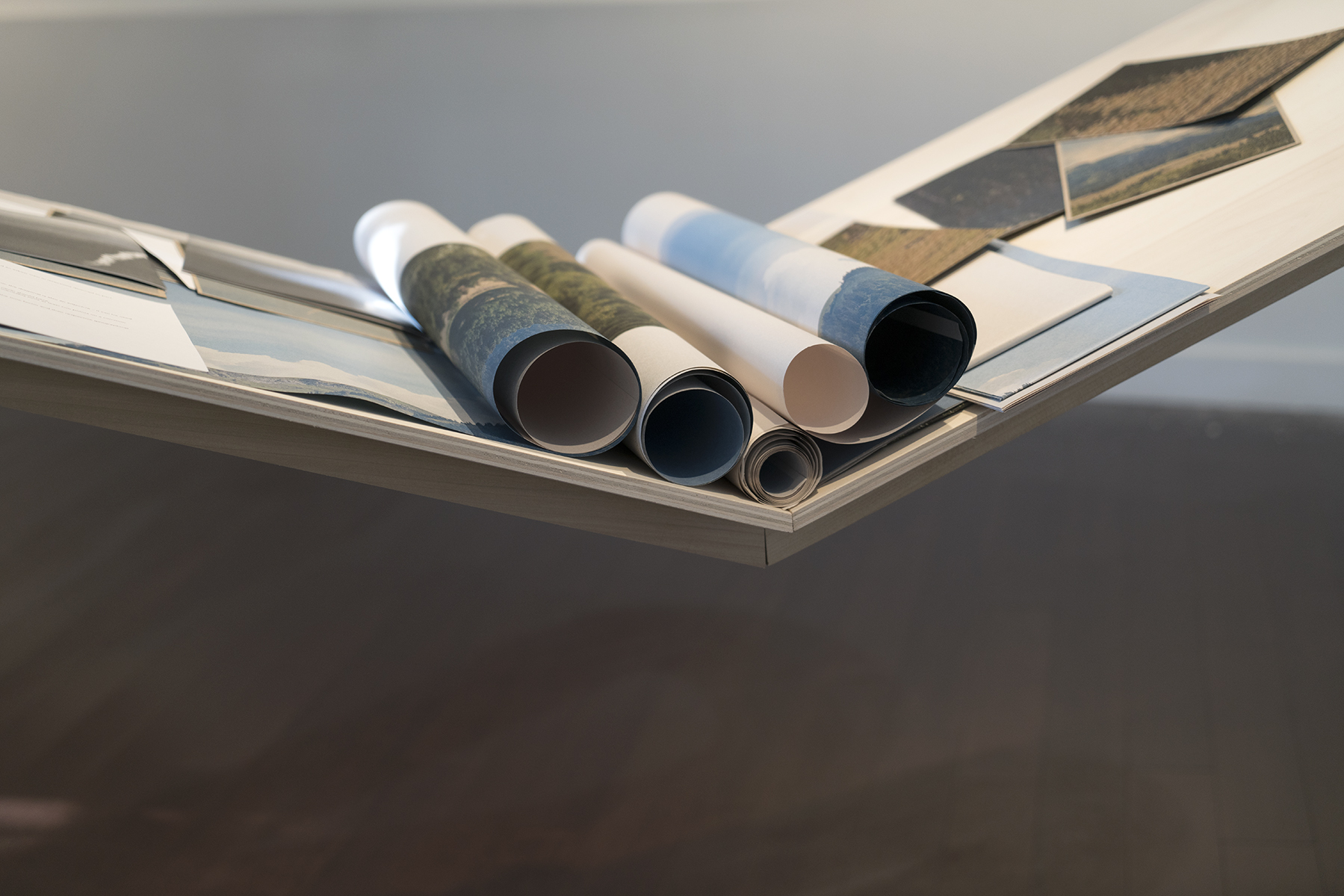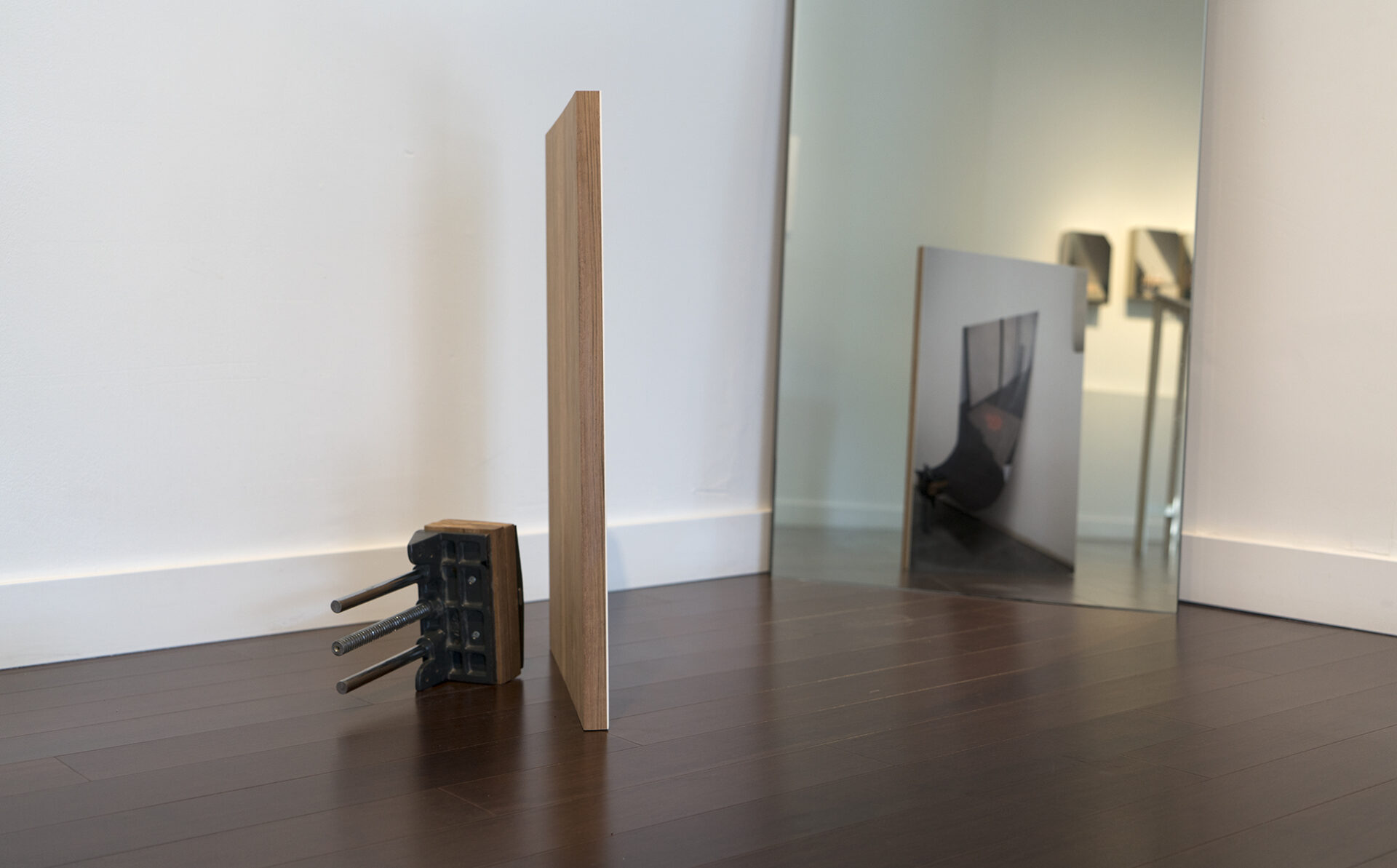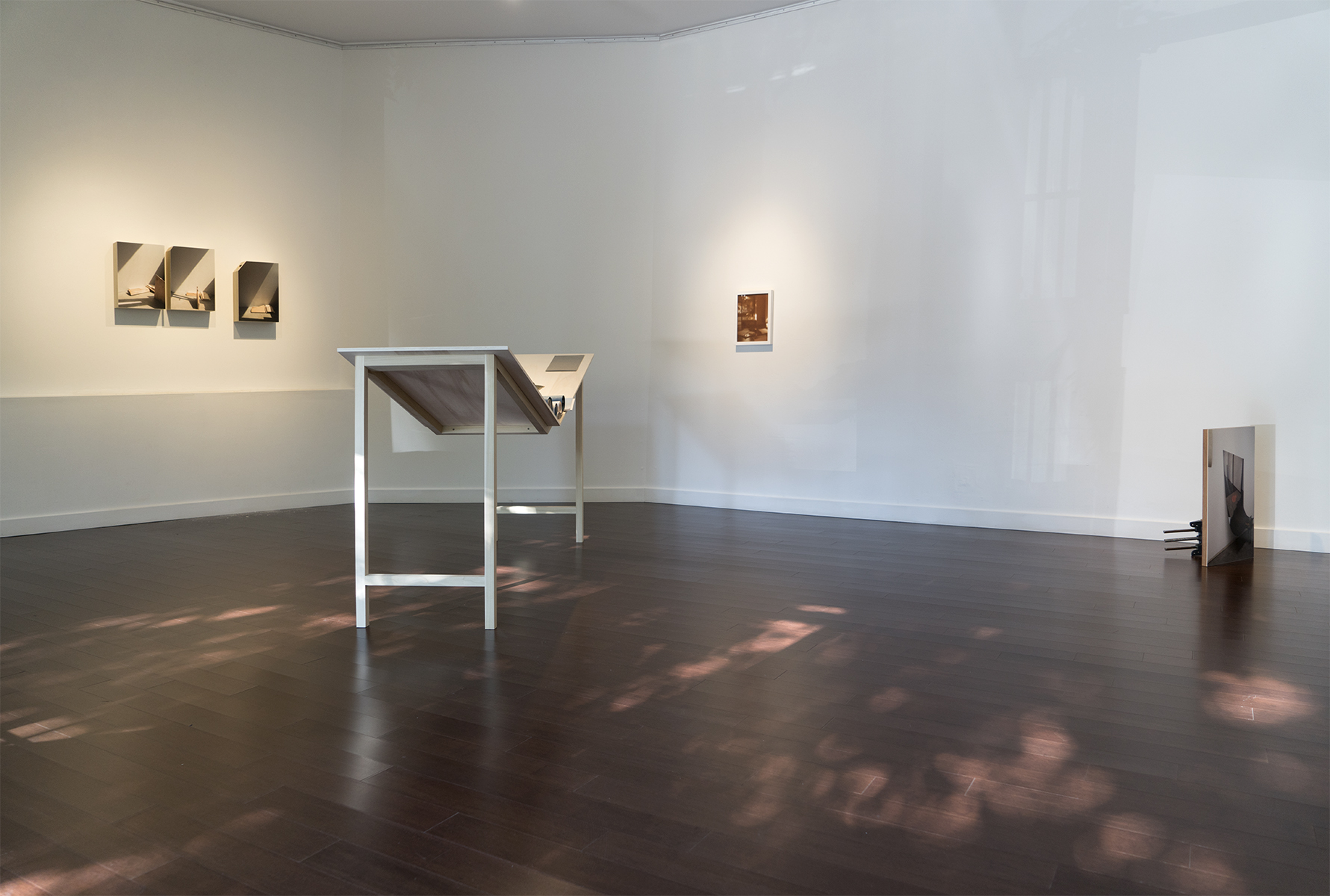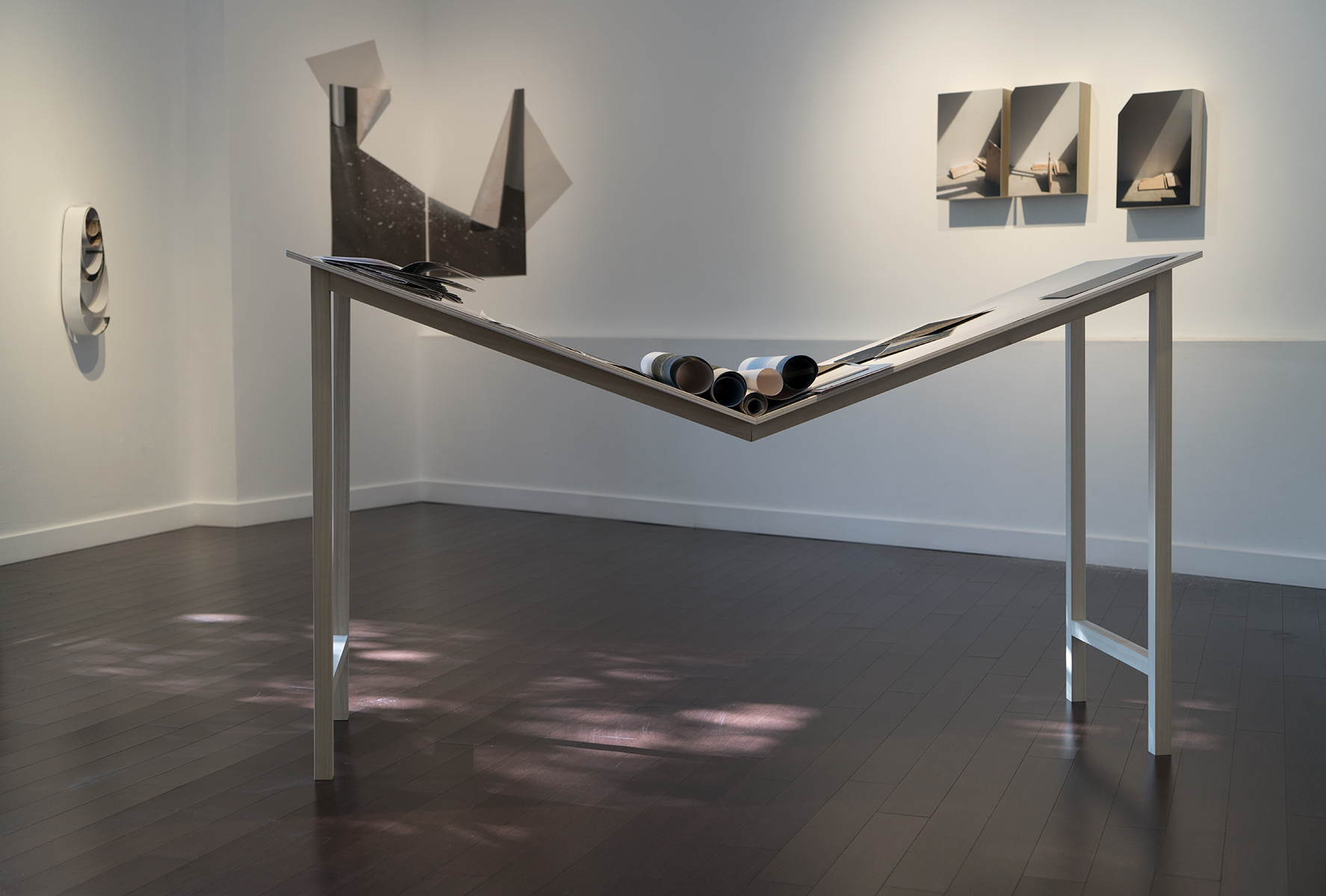The exhibition FAITS ET CAUSES is anchored in the recent photographic installations of artist Lucie Rocher by focusing on their process of making. Her approaches of capture and exploration, which bring her photography-based practice closer to the medium of sculpture, are revealed through a selection of works and non-works that altogether questions ways of seeing and presenting images.
Some artists highly scrutinize the photographic language, dissecting its physical, mechanical, and numerical properties at the expense of losing any sense of concrete representation, to achieve a conceptually based practice geared towards abstraction. While this formal exercise is far from being foreign to the artist, Rocher’s practice remains invested in the language of figuration itself. The works relate by metonymy to construction fields – both visually and figuratively through their precariousness and rudimentary appearance – where materials of all sorts accumulate, linger, and are left as is throughout the space, much like in artist studios. The reality captured as such becomes fragmented, nearly absent, as the void becomes the protagonist. Through her porous exploration process, the artist’s practice builds upon layers.
Rocher’s inclination towards architecture, and by extension the built environment, is inexhaustible. This is revealed through its multiple dimensions in both public and private spaces. Within the hands of the artist, the subject has been continuously sectioned, doubled, folded, hidden, superposed, photographed and re-printed. It finds itself undergoing a handful of manipulations that often makes it semirecognizable or magnified based on other perspectives and viewpoints. Foiling the codes of photography, her works and other prototypes articulate a fluid reflection around the frame and a sustained research towards the modes of hanging. They are fixed to the wall using tape, rolled up around a nail in its roughest state, or laid out on the table, all of which affirm their status as conventional and residual objects. On rare occasions where a frame is present, the latter serves only to reinforce the conceptual and formal qualities of the work itself.
The frail and routine nature of newspaper – a poor and disposable medium used in many installations – contrasts with the solidity and permanence of the materials represented. Diametrically opposed to one another, the works are also built through an interplay of scale, perspectives, repetitions and diagonal lines that compose their overall spatial arrangement. Diagonal(e) table miroir (2017) embodies all of these directions. Stability, a notion generally associated with table-like objects, is overturned here by the inclined surface of the apparatus, which reinforces the effects of superposition and multiplication of images, themselves heightened by the presence of mirrors.
Sépia, double reflect in situ #2 (2017) on the other hand evokes ancient clichés in the tones of brown that are associated with a particular era of the medium. Meanwhile, such a dialogue with history continues with the space of display, beyond the technique. Captured during the installation of the exhibition, a fragment of the gallery, which is reflected in the glass of the frame, fills the space of representation. If such a frame-object, a photographic anamorphosis, slowly grapples with the subtle and emerging details of reality, it further unveils the means, pursued by the artist, to make visible all the construction times of an image.
Julie Alary Lavallée, curator

